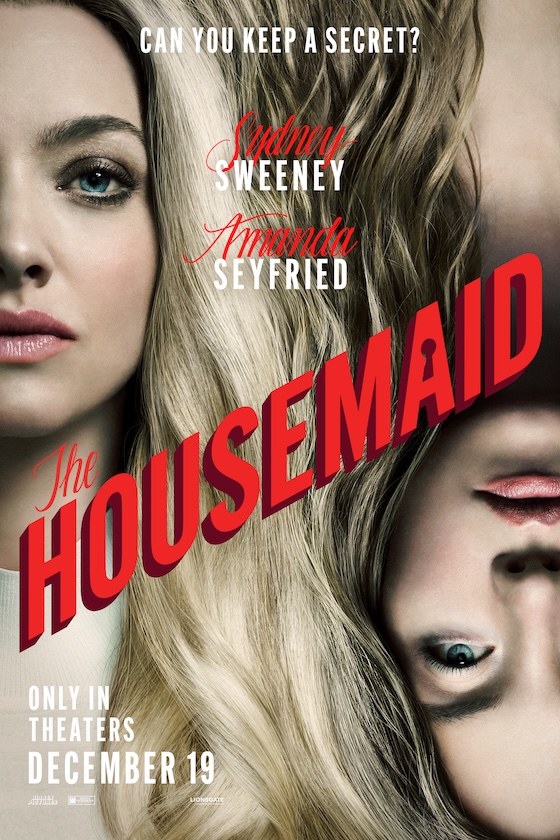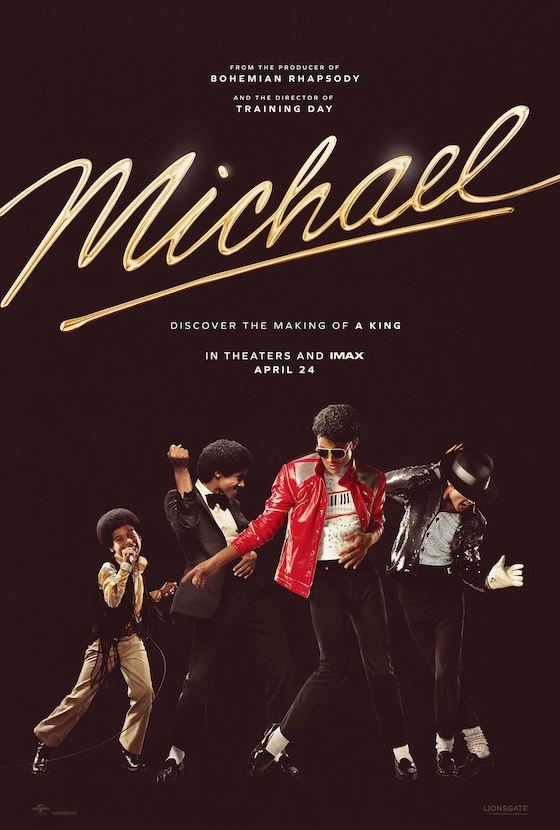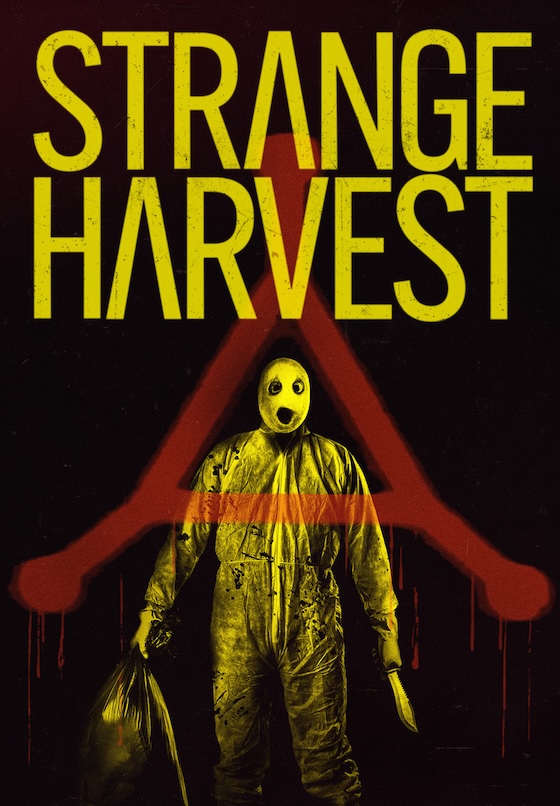
While the majority of people probably think of Andrew Lloyd Webber when they hear any mention of The Phantom of the Opera, there remains a loyal following of film lovers who, correctly, can’t help but picture Lon Chaney’s terrified expression in his full phantom regalia as he is unmasked for the first time. It’s a frightening scene; one that was once considered too intense for audiences but – through the magic of the HD format – can be viewed time and time again courtesy of Image Entertainment and Universal Pictures
Originally made in 1925, director Rupert Julian shocked audiences by giving his star, Chaney, full reign over his self-applied makeup and then, due its visceral nature, kept it a secret from the public until the silent classic premiered. Audiences fled the theater in terror. Some fainted. Chaney, fresh off the success of his makeup work in The Hunchback of Notre Dame, was ready to create another monster for Universal Pictures. Thus, The Phantom (and Universal Picture’s long standing love affair with creature features) was solidified
As I have said before: we love our monsters and the mayhem they create!.
The new season at the Paris Opera opens with a lavish production of Gounod's Faust and quickly, due to the thundering and defiant voice of the Grand Opera’s own prima donna Carlotta (Virginia Pearson) after receiving a warning that she must not perform, the number ends in tragedy as she brings the giant-sized chandelier down upon her audience and herself. The unharmed flee in terror. Some remain and whisper about there being ghosts and a mysterious phantom lurking below the Opera House; that this accident is exactly what he wants to happen because he is in love with Carlotta’s understudy.
That’s only one of the many strange things happening in the Opera on opening day. Managers suddenly change hands and warn of a ghost who inhabits Box Five; letters are received demanding that understudy Christine Daae (Mary Philbin) be allowed to sing in Carlotta’s role or suffer; strange music is heard floating from forgotten canals below the Opera House; and shadowy figures pass unnoticed. Then, without warning, Christine is abducted by a masked phantom (Chaney) who reveals that he once was named Erik and that he is in love with her and that she must love him and must remain at the Paris Opera forever.
Vicomte Raoul de Chagny (Norman Kerry) and Inspector Ledoux (Arthur Edmund Carewe), after being alerted about the Phantom’s presence below the Opera House by Christine during a masquerade ball, are hot on the deformed man’s heels. The tunnels are dark and treacherous, but they will find her. They have to. The Phantom will not have his bride.
Director Rupert Julian (aided by Edward Sedwick and even Chaney for later reshoots) keeps the film from being overwhelmed by its fantastic set design and gothic tendencies. The narrative moves at a fairly quick clip as a result and, while the romantic chemistry between Philbin and Kerry is barely there, the horror rests all on Chaney’s shoulders and face. He delivers. In a performance that is as wicked as it is unfortunate, his monster is more of the classically misguided type.
Think Frankenstein with a mad sense of a heart. The film alludes that Erik is an escaped convict who once dabbled in the Black Arts. Somewhere along the lines of cultural acceptance and experimenting with the taboo, his consciousness split itself in two and yet remained loyal to ideas of love and romance and devotion. No matter how warped they became and, now, Christine is his target. She will love him or he will cease to exist.
Again in Hollywood, we see a fierce devotion to qualities of horror that Edgar Allan Poe once made clear in his own writing. The otherworldly building, the deformed, a sense of loss, and a hidden evil all make their appearance in Julian’s movie. He even, in a grand scene of two-tone Technicolor, riffs on Poe’s The Mask of the Red Death narrative. It’s a wonderfully horrific scene that sees a ballroom masquerade and its costumed celebrations brought to its knees by a red-cloaked figure that denounces the proceedings and curses them all. Of course, the doomsayer is the Phantom. Who else?
The Phantom of the Opera is effectively moody and, after not seeing it for a number of years, surprisingly fast-paced. Shadows tell the story that the narrative doesn’t. Emotions echo through the underground. There’s no need for fanfare and fancy set-ups when you have Lon Chaney providing the scares. It’s dramatic and iconic and, with three versions of the film offered, The Phantom of the Opera is, at long last, complete.



Home Video Distributor: Image Entertainment
Available on Blu-ray - November 1, 2011
Screen Formats: 1.33:1
Subtitles: None
Video: MPEG-4 AVC; 1080p
Audio: LPCM 2.0
Discs: Blu-ray Disc; single disc
Region Encoding: Locked to Region A
Lon Chaney is Erik, the horribly disfigured Phantom who leads a menacing existence in the catacombs and dungeons beneath the Paris Opera House. When Erik falls in love with a beautiful prima donna, he kidnaps her and holds her hostage in his lair. This horror classic, presented in its 1929 re-edited reissue version, features a rare early 2-color Technicolor sequence.
Video
There are three versions of the film offered, two of which were mined from a restored 1929 35mm print. The final and rarest one from a 16mm print from 1925. The first 1929 version is offered in 1080p in a 1.2:1 aspect ratio and features a wonderful score from Alloy Orchestra and a Gaylord Carter organ score in uncompressed LPCM 2.0. The other 1929 version is presented in 1080i in a 1.2:1 aspect ratio and features a well-known score written by Gabriel Thibaudeau. Finally, the 1925 version of the film is presented in 480p standard definition in an aspect ratio of 1.37:1 and features a new piano score by Frederick Hodges. While the transfers look great, the 16mm 1925 version is for purists only as it looks the worse. Interestingly enough, it also contains a great amount of missing sequences long thought lost to the many ravishes of time.
Audio
You get three different scores with an uncompressed LPCM 2.0 track.
Supplements:
While much of the disc’s space is given to its many soundtracks and versions, what the supplements offer is one interview with composer Gabriel Thibaudeau who talks about his work with silent films. There’s a rich collection of photos that play automatically and a look at the entire script. Also, for enthusiasts, there is a program guide which accompanied the original release that can be sorted through by hitting the forward button. It’s pretty interesting material, but one wishes they could have tacked on a new feature about the making of the film and such.
Commentary:
-
Dr. Jon Mirsalis presents a wonderful commentary for one of the 1929 versions of the film. Most of the time is spent comparing the 1925 version of the film to the 1929 versions of the beloved classic, but he is an authority on all things Chaney and reveals a lot of information about the production and Chaney’s many, many lost films.
Special Features:
-
Interview with Gabriel Thibaudeau from 2004 (11 min)
-
Photo Gallery (14 min)
-
Script (9 min)
-
Souvenir Program (2 min)
| Movie | ||
| Video |  |
|
| Audio |  |
|
| Extras |  |
|
|
Composite Blu-ray Grade
|
||

MPAA Rating: Passed.
Runtime: 93 mins
Director: Rupert Julian
Writer: Gaston Leroux; Walter Anthony; Elliott J. Clawson
Cast: Lon Chaney; Mary Philbin; Norman Kerry
Genre: Horror | Drama
Tagline:
Memorable Movie Quote: "She is singing to bring down the chandelier!"
Theatrical Distributor: Universal Pictures
Official Site:
Release Date: November 15, 1925 (United States)
DVD/Blu-ray Release Date: November 1, 2011
Synopsis: A mad, disfigured composer seeks love with a lovely young opera singer.

































